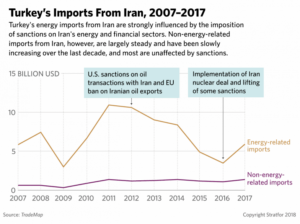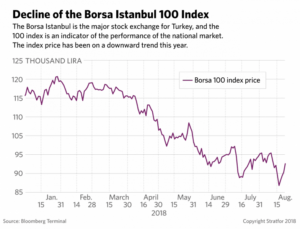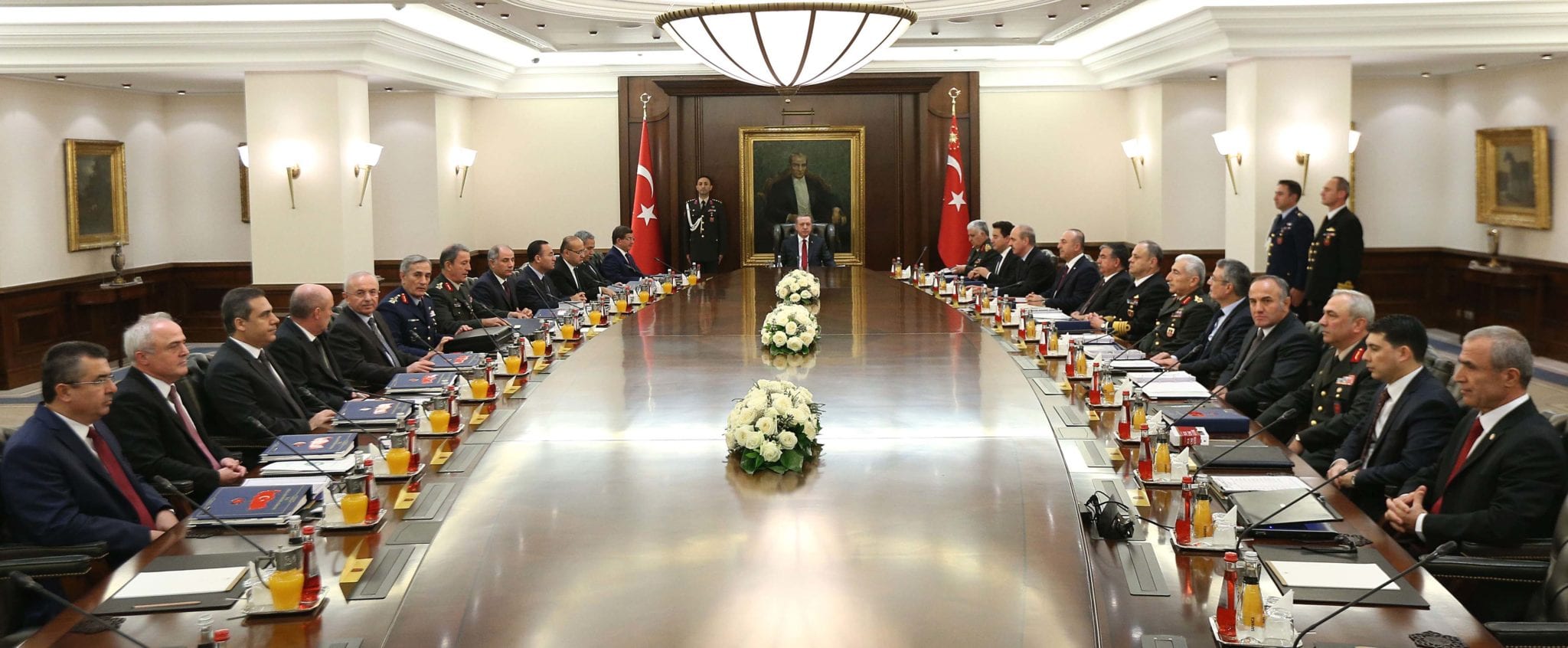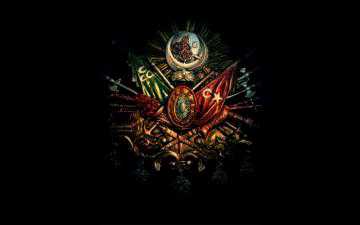The Blue Mosque in Istanbul, built in the early 1600s to assert Ottoman power.
Turkey is entering a new era. Following a failed military coup against President Recep Tayyip Erdoğan in 2016, a referendum last April approved sweeping constitutional amendments amidst a government-declared state of emergency and allegations of electoral misconduct. The changes call for a super-executive presidency without robust checks and balances. And as a result of June’s presidential elections, not only is the government being reorganized under Erdoğan’s authoritarian leadership, but Turkish society is being recreated in his vision of the Ottoman past.
If there is a master key to the code of the New Turkey, it is a reimagined Ottoman-Islamic identity.
In speech after speech, Erdoğan has called Turkey’s identity essentially Ottoman (Osmanlılık). The premise has policy implications both at home and abroad. It is supposed to follow that Turkey has a right, if not a duty, to defend the rights of Muslims in former Ottoman territories. It was Erdoğan who supported the independence of Albanian Muslims in the Republic of Kosovo, telling a cheering crowd in the capital of Priština that “Turkey is Kosovo and Kosovo is Turkey.” His language is similar when it comes to the Palestinians: they, too, are claimed as Ottoman Muslims. If there is a master key to this code of the New Turkey, it is a reimagined Ottoman-Islamic identity—one pioneered by Turgut Özal in the 1980s as prime minister and then president, and now reconstituted for the twenty-first-century by Erdoğan and his fellow Justice and Development Party (AKP) member Ahmet Davutoğlu.
The Ottoman Empire dissolved in 1922. It was superseded by the Republic of Turkey, whose first president, Mustafa Kemal, embarked on a sweeping program of secular, westernizing reforms—a period known as the Atatürk era. The Ottoman Caliphate was abolished, Islamic canon law was replaced with a secular civil code, and women were granted full political rights.
What does Ottomanism signify nearly a century later? There is no easy answer. A number of terms proliferate in both popular and intellectual culture, each with a distinct valence—from “Ottomanism,” “Republican Ottomanism,” and “neo-Ottomanism” to the more colorful “Ottomania” and “Ottoman-philia.” The words crystallize different uses of the past and different aspirations for the future.
As a historical term, Ottomanism refers to a nineteenth-century project of the Ottoman bureaucracy, inaugurated by the Tanzimat Reforms of 1839. These proto-Kemalist policies responded to divisive nationalist movements in the Balkans by articulating a supra-religious and supra-ethnic Ottoman identity that could serve as the foundation of a unified, westernized state. Loyalty to the sultan was replaced by loyalty to the Ottoman fatherland (vatan), but Islam played a more central role than it did under Kemal’s Republic.
In contemporary Turkey, Ottomanism has departed from this historical label to symbolize much else—from justice, power, and pluralism to Islamic primacy and Turkey’s own campaign to make the country “great again.” Political scientist Ioannis Grigoriadis distinguishes two broad ideological formations: “nostalgia for Ottoman grandeur, territorial expansionism and attempts to reintroduce Islam into Turkish politics” and a more Tanzimat-inspired “liberal political ideology which advocated a civic understanding of Ottoman national identity, embracing all Ottoman subjects regardless of religious and ethnic affiliation.” Meanwhile, for the forty-five states that the Ottoman Empire once ruled, Ottomanism connotes oppression, brutality, conquest, Islamic hegemony, and a pervasive source of economic and political backwardness.
To Turkey’s conservative Muslims, Ottomanism offers the semiotic allure of glory, power, and victory.
It is telling that in Turkey, and to some extent in Bosnia and Kosovo, the Ottoman Empire is now looked back upon with nostalgia. These appeals to a bygone era are not merely ideological and political: there is more at stake than ideas and arguments, policies and party lines. They have come to function as social imaginaries—what sociologist John Thompson defines as “the creative and symbolic dimension of the social world . . . through which human beings create their ways of living together and their ways of representing their collective life.” In other words, they have formed the “background of an intersubjectively shared lifeworld”—a cohesive bond knitting Turkish communities together, especially conservative and religious ones. To Turkey’s conservative Muslims, Ottomanism offers the semiotic allure of glory, power, and victory—a social identity that confers integrity, respect, and self-esteem, dispels the feelings of inferiority and marginalization that animate a pervasive siege mentality, and validates Turkey’s place in global politics. It finds expression in all aspects of life, from fine arts, popular television series, books, and magazines, to cuisine, music, public events and rallies, and even furniture.
Islam—both as a religion and as a foundational civilization—lies at the center of this identity. Some might argue that the new Ottomanism came of age with the rise of political Islam; indeed it is difficult to see precisely where Ottomanism begins and Islamism ends. As far as a new conservative bourgeois class and ascendant pro-Erdoğan journalists and public intellectuals are concerned, at least, appeals to the Ottoman identity are more welcome than those to the Golden Age of Islam.
This Ottoman imaginary represents an unprecedented restructuring of the country since 1922. It embodies a new political legitimacy that plumbs the depths of identity desires in ways apparently not fulfilled by the modernizing Kemalist project. Indeed some conservative intellectuals blame the country’s current identity crisis on the secularizing reforms instituted at the founding of the Republic. And after the 1980 military coup, the “Turkish-Islamic Synthesis” emerged as an antidote to the growing appeal of socialism and to Kurdish secessionist claims.
The Ottoman past has thus become the foundation upon which to build a future once viewed as so far gone that it was impossible to reinvigorate. But exactly what sort of future worth building is a matter of contention, and the country’s current political struggle reflects a deeper conflict between two competing neo-Ottoman imaginaries. On the one hand, there is the Özal variety, which is cosmopolitan, pro-European, and religiously pluralist, even while it recognizes a special role for Islam in society. By contrast, the increasingly dominant vision of Erdoğan and Davutoğlu is exclusivist, anti-Western, and Islamist in both a political and social sense.
The new discourses of Ottomanism have coincided with a sweeping range of social and economic developments that have left no corner of Turkey untouched. Since the mid-1980s, when Özal became prime minister, this resurgent Ottomanism has fueled Turkey’s conservative transformation.
Özal oversaw Turkey’s move from an import-substitute economy to an export-oriented, private market model. His neoliberal policies gave birth to a conservative Muslim bourgeoisie, which, in turn, has played a critical role in the latter-day Ottomanization of Turkish identity. Turkey became better positioned to compete in the global market, and the role of a state-run economy gradually declined. The ideals of a free market, private enterprise, and enlightened civil society generated many opportunities for Turkish communities, and improving economic conditions incentivized a foreign policy oriented toward the broader international community.
The return of the repressed Ottoman identity has emboldened leaders to restore Islam to the public domain.
Özal’s term as president, from 1989 to 1993, coincided with a cascading series of international events that triggered and rejuvenated suppressed memories of similar conditions in the late Ottoman era. Besides the deportation of Muslims from Bulgaria in the late 1980s, there was the accelerating collapse of the Soviet Union, the disintegration of Yugoslavia, the systematic campaign of genocide against the Bosnian Muslims, the Armenian occupation of the Karabakh region (from which a million Azerbaijani Turks were deported), and the first Gulf War. Neo-Ottomanism, as a new domestic and foreign policy orientation, emerged under these conditions. The return of the repressed Ottoman identity emboldened leaders to target the secularizing reforms of the Republic and restore Islamic identity to the public domain.
Turkey’s slow but steady process of Islamization was thus underway during the Özal administration. Yet his understanding of Ottomanism was simultaneously multicultural, pro-European, and Islamic. In Turkey in Europe and Europe in Turkey (1991), he sought to prove that Turkey belongs to Europe by way of the Ottoman legacy, rejecting American political scientist Samuel P. Huntington’s conclusion in “The Clash of Civilizations” that the Islamic world and the West are mutually exclusive and therefore engaged in inevitable conflict. The Kurdish question was Özal’s major concern, and he had hoped to resolve the issue by incorporating the Ottoman model of pluralism and recognition of cultural rights.
For Özal, neo-Ottomanism performs several functions. It provides a justification for recognizing Kurdish identity claims and decentralizing the country. It opens new spaces for Islamic practices and networks to enhance national and transnational civil society by recognizing Islam as a cultural core of Turkish identity and community building. It cultivates a cultural network to expand Turkey’s market in the Balkans, Caucasus, and the Middle East. It develops closer ties with Muslim minorities in former Ottoman provinces, especially with Bosnians, Albanians, and Kurds in Iraq. And it demonstrates that the Ottoman Empire was a southeast European state, giving Özal justification to reclaim Turkey’s European roots and what it sees as its rightful claim to European Union membership.
Erdoğan and former Prime Minister Ahmet Davutoğlu have reconstituted Ottomanism in a very different direction, looking back to history before the Kemalist regime. They refer to the whole of Ottoman history and its civilizational record, which is deeply intertwined with Islam. And as the doors of the European Union have closed on Turkey in recent years, they have reformulated Ottomanism as an anti-Western position.
Davutoğlu is the prolific ideologue. In his many publications, especially Strategic Depth (2001), he develops a reverse Orientalism by ignoring cross-fertilizations of civilizations and religions. His Islamic civilization is shielded by faith and fashioned against the West, embracing the Huntington thesis. Eliding important differences, he equates the nineteenth-century Ottomanism of the Tanzimat era with Özal’s neo-Ottomanism, by virtue of the following historical parallels:
(a) the state was restructured according to the needs of the international system; (b) in both cases, the state reconstituted a new identity and a shared culture [Ottomanism] to cope with the secessionist and nationalist challenges; (c) in this search for new political culture, the Ottoman bureaucrats and Özal tried hard to reconcile Western and traditional [Islamic] values; (d) during the Tanzimat period the state tried to join the Congress of Vienna system, which was formed in 1815, and then after the Cold War and the collapse of the Soviet Union, Özal attempted to integrate Turkey into the European Union system; (e) both the Ottoman Empire, which tried to develop a close alliance with Great Britain, and which became the hegemon of the international system created by the Congress of Vienna; and Turkey has sought to ally with the U.S., which is the hegemon of the international systemic order after the Cold War.
To Davutoğlu, westernization destroys the Ottoman state, eroding its religious legitimacy and creating a society with a weakened historical consciousness and uprooted identity. In fact, Davutoğlu is more pan-Islamist than Ottomanist: his vision of the Ottoman is essentially an Islamic polity defined in opposition to the West.
The Ottomanism promoted by Erdoğan and Davutoğlu thus comprises six defining features. It pits East against the West. It places Islam at the core of the Ottoman identity, civilization, and polity. It looks back to Kadim, an ancient civilization based on sacred teachings. Though it is pluralist and recognizes other major Abrahamic religions, it views Islam as their foundation. It includes the Turks but cannot be reduced to the Turks exclusively, for it embraces a sense of responsibility toward Muslims of former Ottoman territories, especially toward the Palestinians. And it embraces Muslim hegemony and geopolitical power. A small, influential corps of public intellectuals vigorously defend this vision of the Ottoman as the last empire undergirded by diverse sacred religions and safeguarded by Islam, one that serves as a cradle uniting Bosniaks, Arabs, Albanians, Macedonians, Torbeši, and Gorani. It functions as an Islamic melting pot by recognizing the authenticity of other religions and transcending ethnic identities.
As Turkey has grown more economically prosperous, Ottomanism has reverberated in ever-louder tones in every nook and cranny of Turkish society.
Pro-Erdoğan intellectuals thus embrace Ahmet Mithat Efendi’s claim that “the Ottoman had a sacral meaning” (Osmanlı bir mana-ı mukaddesmiş). Mithat Efendi was the most important Turkish intellectual and journalist of the late nineteenth century, who translated Tolstoy and Pushkin to Ottoman Turkish. Islam, as understood by these contemporary Ottomanists, is the defining feature of the formation of Pax Ottomanica, which allows for the two other Abrahamic religions, Judaism and Christianity, of which it was the legitimate protector. For these Ottomanists, inspired by the writings of Necip Fazıl Kısakürek, the bond between Islam and the Ottoman state was erased with the Tanzimat Reforms, which severed Ottomanism from its sacred roots. Yet, despite the westernizing reforms of the state, these conservative neo-Ottomanists believe that the Ottoman spirit is innate in the Turkish-Muslim soul and that such a soul only can be resurrected with the revival of Islam. They insist that the Ottoman spirit is the most deep-rooted identity in every layer of Turkish culture and psyche, and they consider their compatriots and coreligionists as both Ottomans and Turks. They redefine Turkishness as a religio-historic identity, as opposed to an ethnic one.
These neo-Ottomanists are also expansionist. For them Anatolia is not the fatherland of the Turks but a place of retreat during World War I. The Islamic homeland—vatan—signifies a diaspora far greater than Turkey’s geographical boundaries, encompassing those lands yearning to return to the Ottoman.
As Turkey has grown more economically prosperous, Ottomanism has reverberated in ever-louder tones in every nook and cranny of Turkish society. The country’s cultural, political, and social spaces increasingly grapple with the legacy of a bygone era. Yet this uniquely Turkish form of nostalgia requires a more nuanced analysis than a mere critique of mass culture. The Ottomanism of Erdoğan justifies his sultanesque autocratic system of governance and seeks to Islamicize both state and society. It has become at once a political, cultural, and intellectual expression for a conservative elite that seeks to consolidate power.
As new generations in Turkey seek a set of moral and political principles from their supposedly perfect and wiser ancestors, they have been susceptible to imaginaries that not only simplify the complex and sometimes shameful past but also smooth away inconvenient contradictions. Now, as the country enters a new era, it is imperative to recognize how Erdoğan has instrumentalized the Ottoman past for authoritarian ends.















